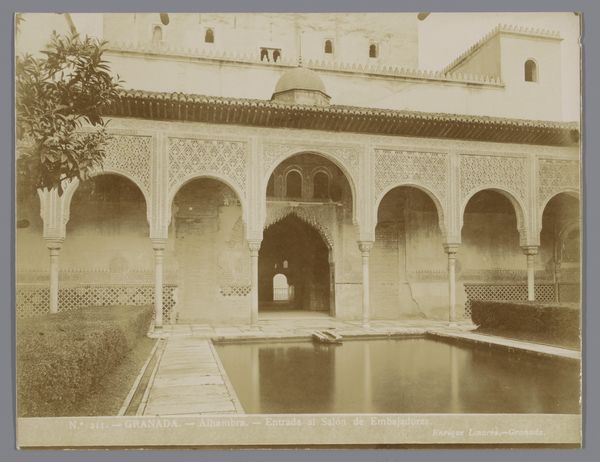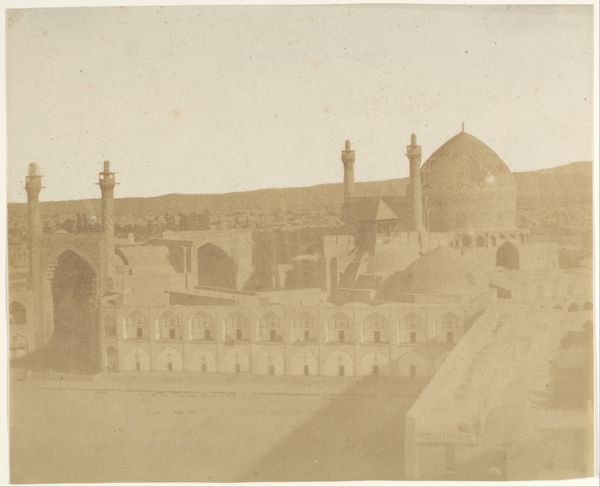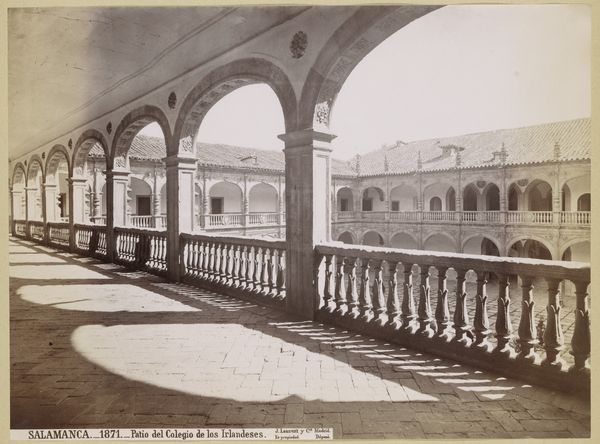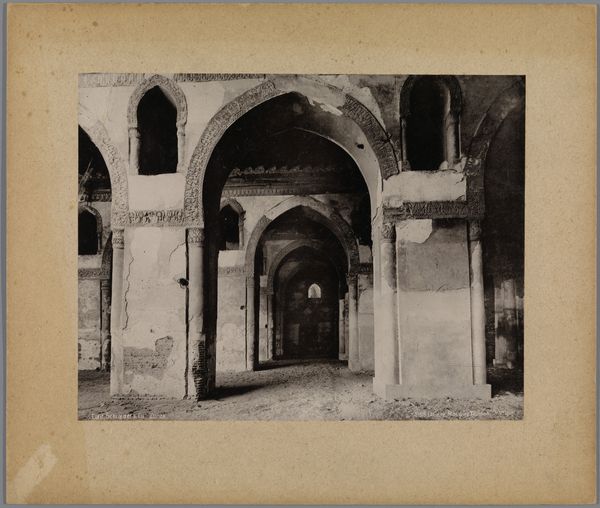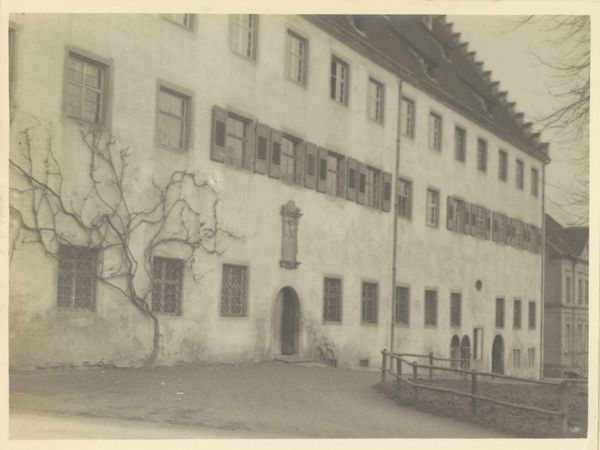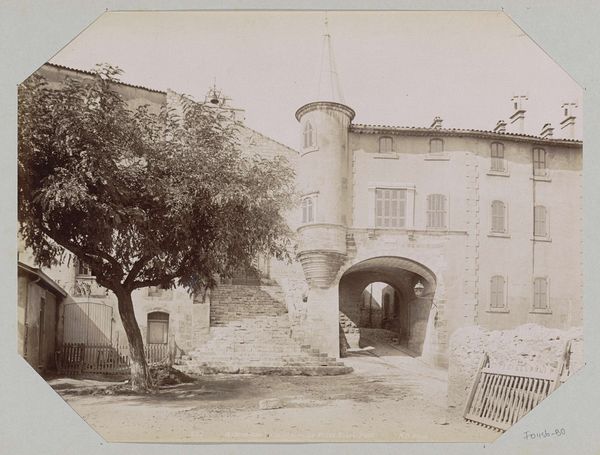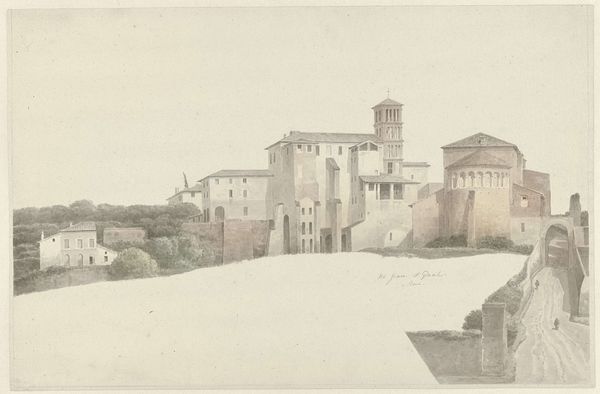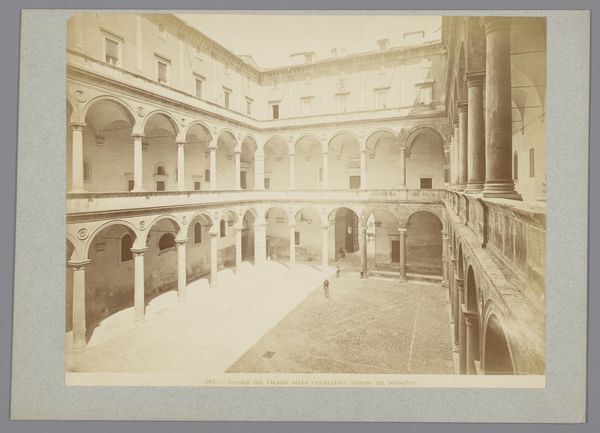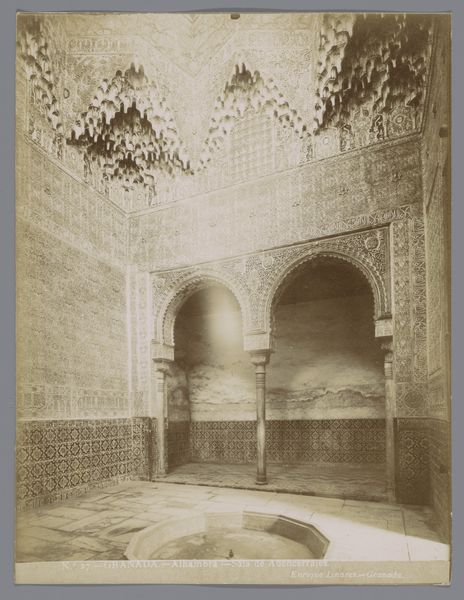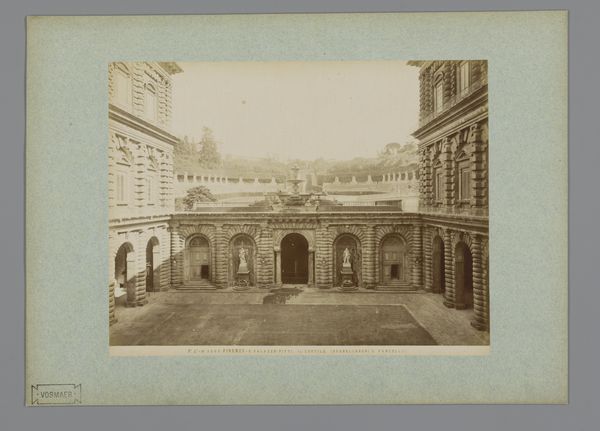
Patio de los Arrayanes, Alhambra, Granada, Spain 1854
0:00
0:00
daguerreotype, photography, architecture
#
landscape
#
daguerreotype
#
photography
#
orientalism
#
architecture
Dimensions: Image: 10 in. × 13 5/8 in. (25.4 × 34.6 cm)
Copyright: Public Domain
Curator: Alphonse Delaunay’s 1854 daguerreotype, "Patio de los Arrayanes, Alhambra, Granada, Spain," intrigues me. It seems to depict the courtyard, as it emphasizes symmetry, and there is something mesmerizing about its aged monochromatic sepia. What do you think makes this work so striking? Editor: The thing that stands out most to me is the visible hand in the crafting process, despite it being photography. The monochromatic choice and daguerreotype really emphasizes the artistry present during development. In what way does the process inform the message being conveyed? Curator: That's a great observation. We tend to think of early photography as objective documentation, but the material processes here suggest something more. Think about the labor involved in setting up this shot, transporting heavy equipment, the exposure time, and the alchemy of the darkroom. Isn't the very act of creating this image a type of appropriation, almost an industrial process, of a cultural artifact? How does its depiction reframe that cultural perception of Granada through Delaunay's work and resources? Editor: So, the finished image belies the intensive, resource-heavy procedures? Also, do you think the choice to not employ color further alters perception, or simply marks its temporality? Curator: Exactly. And consider how photography as a relatively new technology altered traditional artistic patronage and craft hierarchies. Who got to decide what was worth photographing, and who controlled the means of image production and consumption? The absence of color, while a constraint of the era, adds to that sense of historical distance and romanticization – reinforcing, perhaps, the exotic 'otherness' the orientalist movement traded upon. In the making, he makes a statement. How about you, any last thoughts about its artistic relevance today? Editor: Definitely. It is important to remember the full artistic experience when examining its components. Knowing its origins has given me new-found respect for its craft.
Comments
No comments
Be the first to comment and join the conversation on the ultimate creative platform.
